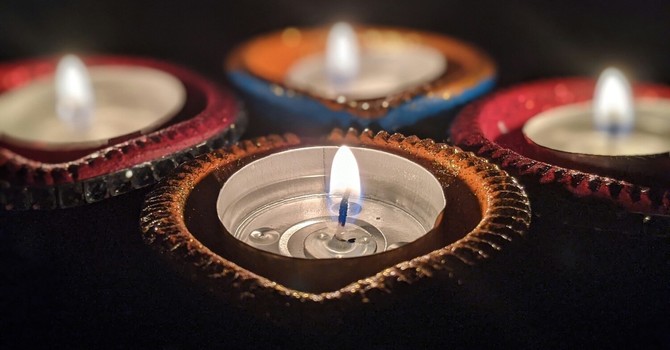Estimated reading time: 7–8 minutes
Anxiety can take many forms — trouble focusing, a constant sense of being “on alert,” ruminating or racing thoughts, or difficulty slowing down even when you’re exhausted. It can interfere with sleep, work, decision-making, and relationships. Sometimes life looks fine on the surface, but internally it feels like your mind won’t settle.
Therapy creates a steady, grounded space to pause and understand what’s happening beneath the surface. The goal isn’t to eliminate anxiety entirely. Anxiety is part of being human. Instead, therapy helps you understand what your anxiety is trying to protect, respond with intention instead of reacting automatically, and live more from your values than from fear.
In this article, we’ll explore how therapy helps with anxiety, what actually happens in the process, and the kinds of changes people often begin to notice over time.
In therapy, your therapist works with you to build both:
- Practical skills you can use in daily life
- Insight and emotional understanding that support long-term change
Related Reading: Why Slowing Down Feels so Hard with High Functioning Anxiety
Understanding Anxiety Instead of Blaming Yourself
Anxiety isn’t a personal flaw — it’s your nervous system working hard, sometimes too hard, to keep you safe. Therapy helps you get curious about why it shows up when it does:
- Is it trying to protect you from rejection or conflict?
- Is it signalling that you’re exhausted or stretched too thin?
- Did it once help you cope but has become overactive now?
- Is it warning you about danger, even when the risk is low or uncertain?
When you understand what anxiety is communicating, it becomes something you can work with rather than something you feel pushed around by.
Related Reading: Unexpected Ways Anxiety Shows up in Your Daily Life
Building Skills You Can Use Between Sessions
Therapy isn’t just talking; it’s practising. You learn tools you can use in real-life moments, not only in session:
- Slowing down anxious thought spirals early
- Grounding yourself when your body jumps into “fight-or-flight”
- Taking small, manageable steps instead of avoiding
- Treating yourself with more compassion and less harshness
With repetition, these skills become more familiar — especially during stress.
How Cognitive Behavioural Therapy (CBT) Helps with Anxiety
CBT is one of the most common approaches for anxiety because it’s practical and collaborative. It helps you identify and shift patterns such as:
- Expecting worst-case scenarios
- Feeling responsible for things outside your control
- Assuming others are judging you negatively
Together, we look at how your thoughts, emotions, and behaviours interact — and practise new responses that create more calm and flexibility over time.
Related Reading: How Therapy Helps You Reframe Negative Thought Patterns
Calming the Mind and Body (Mindfulness and Somatic Awareness)
Anxiety often shows up physically: tight chest, clenched muscles, racing heart, difficulty taking a full breath. Mindfulness and somatic strategies help you:
- Notice anxiety earlier
- Interrupt spirals before they intensify
- Use breath and grounding to calm the nervous system
- Stay present rather than getting caught in “what ifs”
Instead of fighting anxiety, you learn to observe it with curiosity — which often reduces its intensity.
Related Reading: How Therapy Can Help You Manage Stress and Reconnect with Calm
Understanding the Root Causes of Anxiety (Psychodynamic and Attachment-Informed Work)
Sometimes anxiety is connected to earlier experiences — the ways you learned to stay safe, be accepted, or avoid conflict. In therapy, we explore how these patterns formed and how they show up today, including:
- People-pleasing
- Fear of failure or judgment
- Taking on responsibility for others
- Difficulty asking for help
Understanding these patterns creates room for new choices that reflect who you are now — not who you had to be then. A safe, consistent therapeutic relationship can also help your nervous system settle over time.
How Art Therapy Helps with Anxiety
Anxiety isn’t always easy to put into words. Art therapy offers another pathway to understand your inner experience:
- Externalizing overwhelming thoughts or emotions
- Accessing insight through colour, image, or symbol
- Exploring experiences visually rather than verbally
No artistic skill is needed. The focus is on expression and relief, not aesthetics.
Highlighting and Strengthening What’s Already Working
Anxiety can narrow your focus to everything that feels difficult. Therapy also identifies the strengths and coping strategies you already have:
- What you do that helps you get through hard moments
- Qualities that have supported you in the past
- Values that motivate change
Recognizing what’s already strong makes next steps feel more possible.
A Trauma-Informed Foundation: Safety First
If anxiety is connected to past overwhelm or trauma, therapy moves at a pace that feels manageable. We focus on:
- Regulation and grounding
- Predictable collaboration — you’re in control of the process
- Respecting your nervous system’s limits
Healing isn’t about revisiting trauma unnecessarily — it’s about reducing its ongoing impact.
What You May Notice Over Time
With regular sessions and steady practice, many people notice:
- Less belief in anxious thoughts
- Stress that doesn’t escalate as quickly
- Greater ability to pause and recharge
- Increased trust in their ability to cope
Anxiety might still show up — and that's okay — but over time, it often feels less overwhelming and easier to navigate.
Frequently Asked Questions
1. What happens in the first session?
Your therapist will get a general picture of your life — your background, supports, stressors, and what brings you in. This helps them understand your context and what may be influencing your anxiety. You only share what feels comfortable.
2. How long does therapy take to help with anxiety?
It varies. Therapy moves at your pace, and change happens gradually as you use strategies and explore what’s contributing to stress. Some people notice improvement within a couple of months; others take longer depending on their needs and circumstances.
3. Do I need a specific type of therapy?
Different approaches can help — CBT, mindfulness, somatic work, insight-oriented therapy, or art therapy. What works best depends on what you find most helpful. Your therapist will work with you to find the right fit.
If you have more questions about therapy, you’re welcome to visit my FAQ page for additional information. You’re also welcome to reach out directly or book a free 15-minute inquiry call if you’d like to ask a few questions or see if therapy might be a good fit for you.
Ready to Get Support?
If anxiety has been getting in the way of how you want to live, therapy can help you reconnect with steadiness, self-trust, and more space to breathe.
I provide therapy for adults in person in North York (Toronto) and online across Ontario. If you’d like to explore working together, you’re welcome to book a first session or reach out with any questions.







